Family
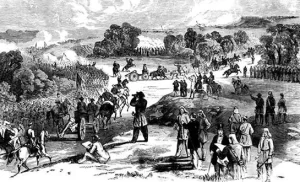 When the gunfire in a battle begins, most of us want to be as far away as possible, including the soldiers fighting in the battle, but in the case of The Battle of Bull Run during the American civil war, this was not the case. In a seriously strange phenomenon, many of Washington’s civilians and the wealthy elite, including congressmen and their families, went on picnics on the sidelines to watch the battle. After that, it became known as “The Picnic Battle” but it was definitely no picnic, as they would soon find out. What no one realized was that The Battle of Bull Run, fought on July 21, 1861, was actually going to be remembered as the first gory conflict in a long and bloody war.
When the gunfire in a battle begins, most of us want to be as far away as possible, including the soldiers fighting in the battle, but in the case of The Battle of Bull Run during the American civil war, this was not the case. In a seriously strange phenomenon, many of Washington’s civilians and the wealthy elite, including congressmen and their families, went on picnics on the sidelines to watch the battle. After that, it became known as “The Picnic Battle” but it was definitely no picnic, as they would soon find out. What no one realized was that The Battle of Bull Run, fought on July 21, 1861, was actually going to be remembered as the first gory conflict in a long and bloody war.
Bull Run was the first land battle of the Civil War. It was a battle that was fought at a time when many Americans believed the war would be short and relatively bloodless. They just really didn’t understand how this was going to play out. So, believe it or not, the civilians went out to watch the war, bringing a picnic lunch along with them. If you think about it, bringing the family and a picnic lunch out to watch a battle, had to seem strange, or even insane, and really it was, but many of the civilians were there because they had to be.
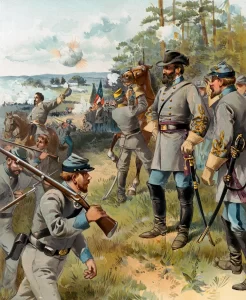
While the reporters were there too, for their own selfish reasons, they were quick to condemn the other civilians who were there, calling them frivolous. The Boston Herald published a lengthy, “not-so-funny” comedy poem about the scene. They were making the civilians look reckless. In the poem, HR Tracy describes a story “lacking in glory” about “careless picnickers who heedlessly went out to watch the battle and then ran away, driving over dead and wounded in their carriages.” This kind of public criticism gave rise to the idea of Bull Run as the “picnic battle” but there was more going on. No one really knows exactly how many civilians were there on that day. The recruits in the battle signed up to Lincoln’s army for a 90-day term, because they all thought the war would be over that fast. It’s also hard to be sure how many watchers there were. Many people say men, women and children, but others say it was mostly men.
The people did bring food and even picnic baskets to watch the battle, but it wasn’t exactly like they thought it was a leisurely day out for either spectators or combatants. Picnic food “was more of a necessity than a frivolous pursuit on a Sunday afternoon,” writes Jim Burgess writes for the Civil War Trust. Just getting to Centreville, where the battle was fought, was a seven-hour carriage ride away from Washington, so they had to take food for the journey, because the local Virginians were not going to offer the Union onlookers any kind of hospitality. Some called them a “throng of sightseers” while others mentioned that they were selling pies and other edibles. I think the whole thing was a misunderstanding of epic proportions. Unfortunately, after the 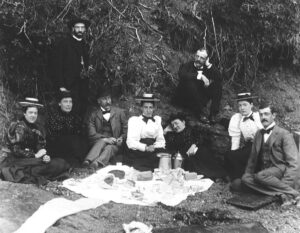 people found out how horrific the whole thing was, and began to witness the terrible bloodshed, they were also subjected to the snide remarks of the media, as if they didn’t already feel bad enough.
people found out how horrific the whole thing was, and began to witness the terrible bloodshed, they were also subjected to the snide remarks of the media, as if they didn’t already feel bad enough.
The reality was that the battle wasn’t just a spectator sport. It was important politically, so the politicians attended. It was important socially, so the journalists attended. It was also an opportunity to sell food, so the food vendors attended. In the end, it was really a circus, and once it was over, there was no one left who innocently thought that this war would end in 90 days, and no one left that thought there would be little bloodshed.

 My nephew, Dylan Herr is a really busy guy. Dylan is the manager of his family’s nine Red Wing Shoe stores. Dylan’s family has owned the stores for three generations. They operate under the Herr Group. Their first store was in Pueblo, Colorado in 1970. Since then they have really grown. They have seven in Colorado, including Pueblo, Greeley, Longmont, Fort Collins, Littleton, Brighton, and Johnstown. They also have two stores in Wyoming, in Cheyenne and in Casper. Dylan is a dynamic individual, and that is a big part of what makes him a prominent member of society, that and his high ideals.
My nephew, Dylan Herr is a really busy guy. Dylan is the manager of his family’s nine Red Wing Shoe stores. Dylan’s family has owned the stores for three generations. They operate under the Herr Group. Their first store was in Pueblo, Colorado in 1970. Since then they have really grown. They have seven in Colorado, including Pueblo, Greeley, Longmont, Fort Collins, Littleton, Brighton, and Johnstown. They also have two stores in Wyoming, in Cheyenne and in Casper. Dylan is a dynamic individual, and that is a big part of what makes him a prominent member of society, that and his high ideals.
He also has a big heart and likes to give back to the community. He is a member of rotary, and he is also on the 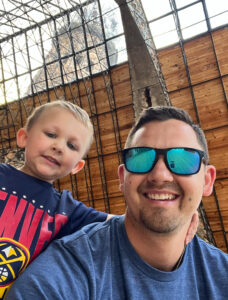
 board for the YMCA in Casper. That is something he and my niece, Katy Herr really loves. Since their son, Max is of the age when he is starting to get into sorts, they spend a lot of time there for all of Max’s activities. Max is very much his daddy’s little man, and sports is simply in his blood. He has been hanging out with his dad on the golf course and such for his whole life. Dylan regularly plays softball and golf. Dylan is a competitive person and loves playing in tournaments. He comes from a family of men who regularly participate in sports, and they are quite good at it. Dylan is naturally really good too.
board for the YMCA in Casper. That is something he and my niece, Katy Herr really loves. Since their son, Max is of the age when he is starting to get into sorts, they spend a lot of time there for all of Max’s activities. Max is very much his daddy’s little man, and sports is simply in his blood. He has been hanging out with his dad on the golf course and such for his whole life. Dylan regularly plays softball and golf. Dylan is a competitive person and loves playing in tournaments. He comes from a family of men who regularly participate in sports, and they are quite good at it. Dylan is naturally really good too.
While his sports are important to Dylan, his top priorities are Katy and Max. Dylan loves taking care of the family home and loves lawn work. Like every other part of his life, Dylan is meticulous in making sure that his little family has 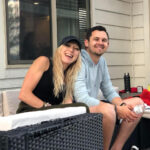
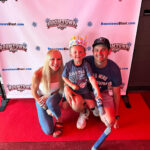 everything they need for a good life. Their home is a big part of that, and he is a proud homeowner, but above all, he is a proud husband and dad. He works very hard to give them the best life possible, and he has been very successful at that. They are a beautiful, happy family, and they lead happy lives. They also give back to the community, and that is an awesome thing to do. Yes, Dylan leads a very busy life, and I don’t think he would want it any other way. Today is Dylan’s birthday. Happy birthday Dylan!! Have a great day!! We love you!!
everything they need for a good life. Their home is a big part of that, and he is a proud homeowner, but above all, he is a proud husband and dad. He works very hard to give them the best life possible, and he has been very successful at that. They are a beautiful, happy family, and they lead happy lives. They also give back to the community, and that is an awesome thing to do. Yes, Dylan leads a very busy life, and I don’t think he would want it any other way. Today is Dylan’s birthday. Happy birthday Dylan!! Have a great day!! We love you!!
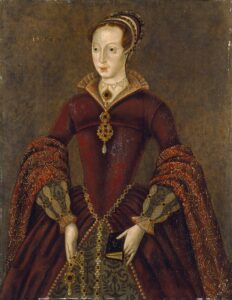
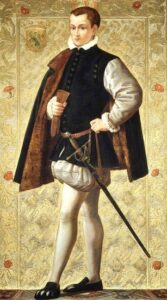 Lady Jane Grey was the great-granddaughter of King Henry VII and the cousin of King Edward VI. Lady Jane and Edward, who were the same age, and they were almost married in 1549. Nevertheless, in May of 1553, Lady Jane Grey was married to Lord Guildford Dudley, the son of John Dudley, the duke of Northumberland. Soon after her marriage, King Edward fell ill with tuberculosis, which would take his life in the end. This would set off a cacophony of arguments that would not end well.
Lady Jane Grey was the great-granddaughter of King Henry VII and the cousin of King Edward VI. Lady Jane and Edward, who were the same age, and they were almost married in 1549. Nevertheless, in May of 1553, Lady Jane Grey was married to Lord Guildford Dudley, the son of John Dudley, the duke of Northumberland. Soon after her marriage, King Edward fell ill with tuberculosis, which would take his life in the end. This would set off a cacophony of arguments that would not end well.
Even in those days, discord over religion brought fights, even to the point of violence. The Catholics and Protestant religions were at war. Mostly it wasn’t a physical war, but certainly sometimes it was an all-out war. Lady Jane as it turned out, was a Protestant, while King Edward VI’s half-sister, Mary was a Catholic. King Edward VI did not want to hand over his throne to Mary. Lady Jane’s father-in-law, John Dudley agreed, and so persuaded the dying king that Lady Jane, a Protestant, should be chosen the royal successor over Edward’s half-sister Mary, a Catholic. So, in June 1553, the dying Edward VI wrote his will, in which he nominated Jane and her male heirs as successors to the Crown. King Edward VI agreed that Mary should not succeed him because she was Catholic would not support the reformed Church of England, whose foundation Edward laid. The will removed his half-sisters, Mary and Elizabeth, from the line of succession on account of their illegitimacy, subverting their lawful claims under the Third Succession Act. Through Northumberland, Edward’s letters patent in favor of Lady Jane was signed by the entire privy council, bishops, and other notables.
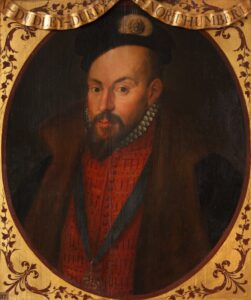

On July 6, 1553, Edward died, and four days later Lady Jane Grey was proclaimed queen of England. The 15-year-old Lady Jane, beautiful and intelligent, had only reluctantly agreed to be put on the throne, and it would be the worst decision of her life. While Lady Jane’s ascendance was supported by the Royal Council, the populace supported Mary, as the rightful heir. Two days into Queen Jane’s reign, Dudley departed London with an army in an effort to suppress Mary’s forces. I don’t know if that was a good idea, or not…likely not, because in his absence the Council declared him a traitor and Mary the queen. Queen Jane’s reign was just nine days.
The next day, July 20th, most of Dudley’s army deserted him, and he was immediately arrested. The same day, now Lady Jane was imprisoned in the Tower of London. Her father-in-law was condemned for high treason, and on August 23rd he was executed. On November 13th, Lady Jane and her husband, Guildford Dudley, were also found guilty of treason. They were both sentenced to death, but because of their youth and relative innocence Queen Mary had chosen not to carry out the death sentences.
Lady Jane’s father, Henry Grey grew furious in early 1554, and joined Sir Thomas Wyatt in an insurrection against Queen Mary, because she had announced her intention to marry Philip II of Spain. While suppressing 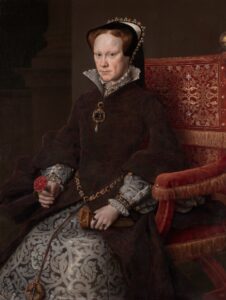
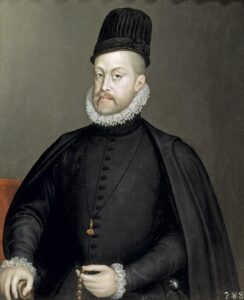 the revolt, Queen Mary decided it was going to be necessary to eliminate all her political opponents, whether she wanted to or not, and on February 7th she signed the death warrants of Lady Jane and her husband. On the morning of February 12th, Lady Jane watched her husband being carried away to execution from the window of her cell in the Tower of London. That must have been horrible in so many ways. This was her husband being led to his death, but she also knew that she was next. Then, just two hours later she was also executed. “As British tradition tells the story, after the 16-year-old girl was beheaded, her executioner held Lady Jane’s head aloft and recited the words: ‘So perish all the queen’s enemies! Behold, the head of a traitor!'”
the revolt, Queen Mary decided it was going to be necessary to eliminate all her political opponents, whether she wanted to or not, and on February 7th she signed the death warrants of Lady Jane and her husband. On the morning of February 12th, Lady Jane watched her husband being carried away to execution from the window of her cell in the Tower of London. That must have been horrible in so many ways. This was her husband being led to his death, but she also knew that she was next. Then, just two hours later she was also executed. “As British tradition tells the story, after the 16-year-old girl was beheaded, her executioner held Lady Jane’s head aloft and recited the words: ‘So perish all the queen’s enemies! Behold, the head of a traitor!'”
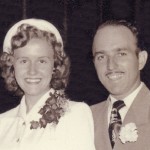
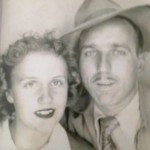 Seventy-one years ago today, two wonderful people, my parents were married. They were great parents, and the loved each other completely. I could go on and on about how my parents loved each other, but the 53 years they spent together proves that. I want to talk instead about the example my parents set…in spiritual matters, in marriage, in life, and in relationships. I know many people had great parents, but these were mine, and for that I am so grateful.
Seventy-one years ago today, two wonderful people, my parents were married. They were great parents, and the loved each other completely. I could go on and on about how my parents loved each other, but the 53 years they spent together proves that. I want to talk instead about the example my parents set…in spiritual matters, in marriage, in life, and in relationships. I know many people had great parents, but these were mine, and for that I am so grateful.
My parents raised us in church from the time we were born. People say that they were born again on a certain day, but I don’t have a day that I can say I was born again. I was always born again. I know that my sisters, Cheryl Masterson, Caryl Reed, Alena Stevens, and Allyn Hadlock can say the same thing. Our parents gave God first place in their marriage and in our home. That is the example that has carried throughout our lives to this day. That is a big part of the legacy of my parents.
Mom and Dad taught us about how we, as wives should be treated. Dad was always so loving, kind, and 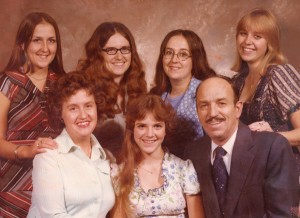 protective of Mom. They also taught us how we, as wives should treat our husbands. There were the normal lessons about understanding that marriage was a covenant, and as such should not be broken. The marriages in our family that did not last, were not the fault of their girls. I know that sounds conceited, but it is the truth. We knew that you had to work at a marriage, and we all did.
protective of Mom. They also taught us how we, as wives should treat our husbands. There were the normal lessons about understanding that marriage was a covenant, and as such should not be broken. The marriages in our family that did not last, were not the fault of their girls. I know that sounds conceited, but it is the truth. We knew that you had to work at a marriage, and we all did.
Another thing my parents taught us that we feel thankful to have learned is that you “never let the sun go down on your wrath.” That is found in Ephesians 4:26, and it was a mainstay in our home. With five girls in the house, you can imagine the drama that could happen. But we were not allowed to go to bed without making up. We had to sincerely say we were sorry, even if we were only “sorry we had fought.” That one verse probably saved the relationships my sisters and I share with each other, and the ones we shared with our parents. Even after we were married, is we had an argument with our mom, and stomped home mad, invariably, Dad would soon be on the phone telling us that we needed to call our mom and make up. What may have seemed like a stiff rule back then, was actually a blessing. Our relationships with our parents remained strong throughout their lives, and for that I am so grateful. Our parents understood that families occasionally fight, but the important thing was that the fight did 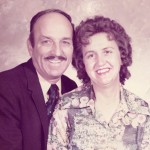
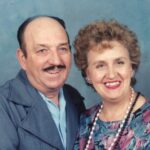 not steal the relationship. We made up and we were not sorry that we did.
not steal the relationship. We made up and we were not sorry that we did.
The lessons from my parents were not always pleasant, but they were always important, and I’m not sorry we learned them, or that our parents took the time to teach then. Thank you both so much, Mom and Dad. Today is the 71st anniversary of my parents wedding day. Happy anniversary Mom and Dad. We love and miss you both so very much, and we know that you are having the time of your lives in Heaven. Can’t wait to see you there.
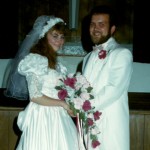
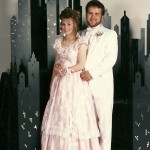 My daughter, Corrie Petersen met her future husband, Kevin Petersen when she was 15 years old, and he was 19 years old. They were both working at Burger King. Much has changed since those days of first, last, and only love for my daughter. Corrie and Kevin have built a beautiful marriage that has now been grown with the addition of two sons, Chris and Josh; two daughters-in-law, Karen and Athena; and five grandchildren, Cambree, Caysen, Justin, Axel, and Cyler, with one more due in January. Their life is beautifully blessed.
My daughter, Corrie Petersen met her future husband, Kevin Petersen when she was 15 years old, and he was 19 years old. They were both working at Burger King. Much has changed since those days of first, last, and only love for my daughter. Corrie and Kevin have built a beautiful marriage that has now been grown with the addition of two sons, Chris and Josh; two daughters-in-law, Karen and Athena; and five grandchildren, Cambree, Caysen, Justin, Axel, and Cyler, with one more due in January. Their life is beautifully blessed.
A few years ago, Corrie decided that she was in a dead-end career, and so she began nursing school. Kevin was her biggest supporter in this endeavor. He took over everything from housework to cooking, while Corrie devoured her schoolbooks and tests. It was a long hard road, but together they made it through, and today, Corrie has been an RN with a bachelor’s degree for over a year. She still devours books, but these days, they are novels, and she has no deadline to finish one.
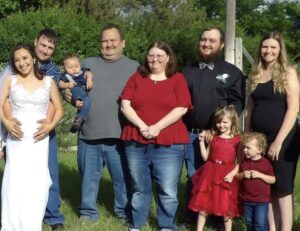
 Kevin has always had a love of old cars, and his spare time is spent working on the classic cars he loves. He had the opportunity, recently to enter his 1966 Cyclone in a local car show. He didn’t win this time, but lots of people really liked his car, and he had a great time. Showing cars is an expensive venture, both in cost and time, but it really is rewarding, whether the car wins or not. Just showing people your work and creativity, is a big reward in itself. Kevin has won prizes before, and I know he will again, because he is very talented.
Kevin has always had a love of old cars, and his spare time is spent working on the classic cars he loves. He had the opportunity, recently to enter his 1966 Cyclone in a local car show. He didn’t win this time, but lots of people really liked his car, and he had a great time. Showing cars is an expensive venture, both in cost and time, but it really is rewarding, whether the car wins or not. Just showing people your work and creativity, is a big reward in itself. Kevin has won prizes before, and I know he will again, because he is very talented.
Of course, the most important people in Corrie and Kevin’s lives is their family. They love spending time with their kids and grandkids, and they are with them often. This new chapter in their lives has brought them so much happiness. With each new addition, their lives are more and more enriched. They have also been renovating their home, and it looks amazing. Kevin has a real talent for this kind of work, and he has taught 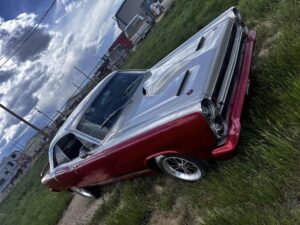
 Corrie a lot. He is an artist in his own right, and together, they have done an amazing job on the house. I can’t wait to see it finished.
Corrie a lot. He is an artist in his own right, and together, they have done an amazing job on the house. I can’t wait to see it finished.
Corrie and Kevin make a perfect couple. Theirs is a match made in Heaven, and they knew that from the moment they met. They were instantly in love, and they never had eyes for anyone else. Now, after 31 years of marriage and 34 years together, they are still going strong. Happy anniversary Corrie and Kevin!! Have an amazing day!! We love you!!
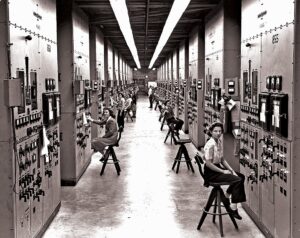 During World War II, a group of young women, mostly high school graduates, joined the Manhattan Project at the Y-12 National Security Complex located at Oak Ridge, Tennessee. Known as the Calutron Girls, the group worked for the project from 1943 to 1945. The women were taught to monitor dials and watch meters for calutrons, which are mass spectrometers adapted for separation of uranium isotopes for the development of nuclear weapons for use during World War II. While the women worked at their jobs, and learned how to read the instruments they were required to monitor, they were not allowed to know the purpose of these things.
During World War II, a group of young women, mostly high school graduates, joined the Manhattan Project at the Y-12 National Security Complex located at Oak Ridge, Tennessee. Known as the Calutron Girls, the group worked for the project from 1943 to 1945. The women were taught to monitor dials and watch meters for calutrons, which are mass spectrometers adapted for separation of uranium isotopes for the development of nuclear weapons for use during World War II. While the women worked at their jobs, and learned how to read the instruments they were required to monitor, they were not allowed to know the purpose of these things.
They were actually monitoring the manufacturing of enriched uranium that was to be used to make the “Little Boy” atomic bomb for the Hiroshima nuclear bombing to be carried out on August 6, 1945. The Manhattan Project, which was established to develop nuclear weapons, required uranium-235 (U235), the fissionable isotope of uranium. The vast majority of uranium that is mined from the ground is uranium-238. Only about while only 0.7% is U235. The scientists in charge of the project developed several processes for separating the isotopes of uranium, including electromagnetic separation and gaseous diffusion.
“The Y-12 factory was built in Oak Ridge, Tennessee, to house 1,152 calutrons, a machine used for isotope separation. The word “calutron” is a portmanteau of California University Cyclotron. Calutrons, a variation on mass spectrometers, work by combining uranium with chlorine to make uranium tetrachloride, which is then ionized and put in a vacuum chamber with a magnetic field. When the charged particles move through the magnetic field, they move in a curve, the radius of which is proportional to the mass of the particles. The two isotopes differ in mass by about 1% and can thus be separated.”
The process of separating the U235 Uranium out of the oar was relatively simple, but it still required people to constantly monitor the calutrons. Unfortunately, during World War II, many of the men were fighting. That left a shortage of labor. There simply weren’t enough scientists to operate all of the calutrons. So, the government recruited farm girls to operate the calutrons instead. The main reason for using the young women, was that they were readily available, accustomed to hard work. A stipulation of their employment was that they were not to ask excessive questions, and they had to be loyal and docile. I’m sure these women thought they were doing something top secret and all, but I don’t think they had any idea of the gravity of this project. Lives were on the line, and lives would be lost. Still, they didn’t know that, so I suppose their superiors assumed it would let them sleep at night. I suppose it did. These women honestly didn’t know what they were a part of…some until years later. They would never forget what they did, and they would always wonder if it was right or wrong.
The Tennessee Eastman Company, which ran the Y-12 site, recruited around 10,000 local women between 1943 and 1945. They hired train operators with only a high school education, and they used a large local advertising campaign to recruit workers. One ad read, “When you’re a grandmother you’ll brag about working at Tennessee Eastman.” Word of mouth brought in several other workers. Of course, in hard times, a big motivator was the money being paid. Plus, these women were patriots, and this work was for the war effort. They were trained for three weeks, and they went to work.
The Tennessee Eastman Company was loyal to the cause. They put a billboard on the premises reading “What you see here / what you do here / what you hear here / when you leave here / let it stay here,” with three wise monkeys to demonstrate “see no evil, hear no evil, speak no evil.” Another billboard at the Oak Ridge location, 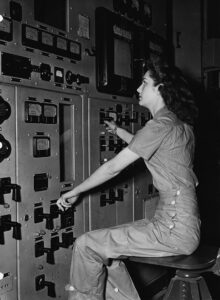 encouraged secrecy among workers. These companies demanded secrecy and confidentiality…if these women wanted to keep their jobs. According to Gladys Owens, who was one of the Calutron Girls, a manager at the facility once told them, “We can train you how to do what is needed, but cannot tell you what you are doing. I can only tell you that if our enemies beat us to it, God have mercy on us!” Of course, that was correct, but these women would have to live with what they did, once they knew what it was. Testimonies said women who talked about what they were doing disappeared. One young woman who “disappeared” was said to have “died from drinking some poison moonshine.” If they were too nosy about what they were working on, they were replaced. Cars going in and out were searched, and letters were opened and read. This was vital and this was no joke. Anything but secrecy would not be tolerated.
encouraged secrecy among workers. These companies demanded secrecy and confidentiality…if these women wanted to keep their jobs. According to Gladys Owens, who was one of the Calutron Girls, a manager at the facility once told them, “We can train you how to do what is needed, but cannot tell you what you are doing. I can only tell you that if our enemies beat us to it, God have mercy on us!” Of course, that was correct, but these women would have to live with what they did, once they knew what it was. Testimonies said women who talked about what they were doing disappeared. One young woman who “disappeared” was said to have “died from drinking some poison moonshine.” If they were too nosy about what they were working on, they were replaced. Cars going in and out were searched, and letters were opened and read. This was vital and this was no joke. Anything but secrecy would not be tolerated.
The work these women did was not what would be considered labor intensive by any means. The women sat on high stools for 8-hour shifts, seven days per week, “monitoring gauges and adjusting knobs to keep the needles where they were supposed to be and recording readings.” The knobs the women were adjusting were simply labeled with cryptic letters. The women did not know what the letters stood for. What they were taught was that “if you got your M voltage up and your G voltage up, then Product would hit the birdcage in the E box at the top of the unit and if that happened, you’d get the Q and R you wanted.” Okay…whatever that meant. All they knew was that they had to make sure the machine remained at the correct temperature. That was vital and if it got too hot, they used liquid nitrogen to cool it down. If the needles reached a point where they could not control them, they had to call someone else to come help…immediately!!!
Former Calutron Girl Wynona Arrington Butner said, “We all wore little fountain-pen-sized dosimeters. Part of signing out of the plant was to check the amount of radiation that you had absorbed every day.” Civilian workers paid $2.50 per month (single) or $5.00 per month (family) for medical insurance. I don’t know if they understood what radiation could do to them or not, but if they did, they would know that the wages paid and even the insurance help, was probably not enough.
Some Calutron Girls had more of a sense of what they were working on than others. Butner, who had some training in chemistry, said she and others with a similar background had some sense of what they were doing. They knew they were producing “the Product,” and they guessed it was somewhere near the bottom of the periodic table. Willie Baker, on the other hand, said, “Even when somebody let it slip that we were building a bomb, I didn’t know what they meant. I was just a country girl. I had no understanding of what an atomic bomb was.” Later, I’m sure the gravity of the work she did, weighed heavily on Baker.
Over two years, the calutrons at Y-12 had produced about 140 pounds of U235. This was enough to make the first atomic bomb. By December 1945, enough uranium for a second Little Boy was available. Then, it all hit these women, because on August 6, 1945, when the US dropped the first bomb, “Little Boy,” on Hiroshima, Japan, the Calutron Girls were finally told what they had been working on. I can’t imagine how they must have felt. When they heard the news, some women were working, while others were in their dorm rooms. Someone came and told them that an atomic bomb had been dropped on Japan, and everyone there had played a part in making it. Yes, it was the enemy, and death happens in war. Nevertheless, the Calutron Girls had mixed feelings about their part in the bomb. Ruth Huddleston said she was “really happy at the time, because her boyfriend was stationed in Germany, and this would bring him back.” Still, it bothered her that she had a part in killing so many people, but she accepted that “if the bomb hadn’t been dropped, then probably more people would have been killed. …But even today, if I think too much about it, it bothers me.” Butner had a similar experience, because at the time, she was happy that the war was over and people she knew in the service could come 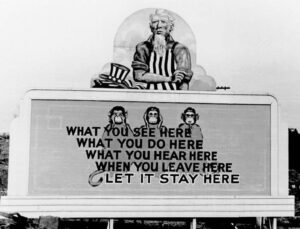 home, but over time, she began to question whether it was the right thing to do. I think many people over the years have questioned it, but good, bad, or ugly, World War II was over.
home, but over time, she began to question whether it was the right thing to do. I think many people over the years have questioned it, but good, bad, or ugly, World War II was over.
Most of the Calutron Girls are gone now, but those who remain, such as Huddleston, regularly shared their stories with the public, often alongside Oak Ridge historian Ray Smith. The women are the subject of the nonfiction book “The Girls of Atomic City” by Denise Kiernan and the novel “The Atomic City Girls” by Janet Beard. I’m sure that many of these women suffered nightmares over the work they did, but did not know they were doing. While I know they suffered much anxiety over that, I hope they also know that we are so grateful for their service to this great nation.

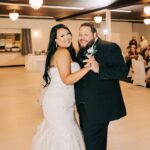 My nephew, Chris Killinger joined our family when he married my niece, Lacey (Stevens) Killinger a little under a year ago. Chris and Lacey are such a beautiful couple, and their wedding was just lovely. Since then, they have just been enjoying married life, and spending time with the kids, Brooklyn and Jaxon, who also joined our family with Chris married Lacey. They have all been a wonderful addition to our family.
My nephew, Chris Killinger joined our family when he married my niece, Lacey (Stevens) Killinger a little under a year ago. Chris and Lacey are such a beautiful couple, and their wedding was just lovely. Since then, they have just been enjoying married life, and spending time with the kids, Brooklyn and Jaxon, who also joined our family with Chris married Lacey. They have all been a wonderful addition to our family.
Chris and Lacey didn’t take a honeymoon right away, but later went to Mexico, and they had a super fun time. Chris and Lacey both have very demanding jobs, and they were ready for some down time. One of the highlights of the trip was when they went swimming in caves down there. The cave walls were beautiful, and it was a very different experience for them. The trip was one they won’t forget.
Chris is the office and purchasing manager for Atlas Aero Service, which is located at the Casper-Natrona  County International Airport. Chris’ job allows him to see all the planes that come and go from the airport. There is a huge variety of planes…military planes, cargo planes, commercial liners, and private jets (often with celebrities). Recently, however, the celebrity wasn’t the person on the plane…it was the plane. Chris knows planes, and he likes planes. He has a real interest in military planes. The plane that they got to work on recently was a plane that had been used in the movie “Tora, Tora, Tora” back in the 1970s. The movie was about the attack on Pearl Harbor in 1941, and while I know that Chris though it was very cool to work on that plane, I can’t help but think about how interested my dad, Al Spencer, Lacey’s grandpa would have loved to see that plane. He was the flight engineer and top turret gunner on a B-17 during World War II, so that plane would have been so cool for him to see. I’m glad Chris got that chance…such a cool experience, and one he will never forget for sure.
County International Airport. Chris’ job allows him to see all the planes that come and go from the airport. There is a huge variety of planes…military planes, cargo planes, commercial liners, and private jets (often with celebrities). Recently, however, the celebrity wasn’t the person on the plane…it was the plane. Chris knows planes, and he likes planes. He has a real interest in military planes. The plane that they got to work on recently was a plane that had been used in the movie “Tora, Tora, Tora” back in the 1970s. The movie was about the attack on Pearl Harbor in 1941, and while I know that Chris though it was very cool to work on that plane, I can’t help but think about how interested my dad, Al Spencer, Lacey’s grandpa would have loved to see that plane. He was the flight engineer and top turret gunner on a B-17 during World War II, so that plane would have been so cool for him to see. I’m glad Chris got that chance…such a cool experience, and one he will never forget for sure.
Recently, Chris and Lacey bought a new camper, and they have been having a great time with it. Chris has had 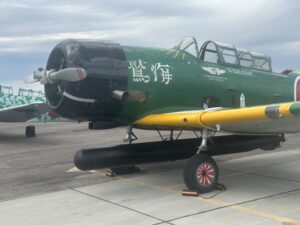
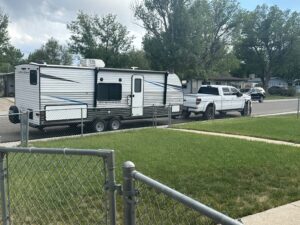 to learn how to pull it, which isn’t easy, but he is getting the hang of it. They have been having a great time going camping and they love their new camper. Lacey’s family takes yearly trips to Pathfinder Reservoir for a whole family week of fun, swimming, games, and lounging. Having a nice camper with room for their whole family is very important. The camper will get lots of use. Today is Chris’ birthday. Happy birthday Chris!! Have a great day!! We love you!!
to learn how to pull it, which isn’t easy, but he is getting the hang of it. They have been having a great time going camping and they love their new camper. Lacey’s family takes yearly trips to Pathfinder Reservoir for a whole family week of fun, swimming, games, and lounging. Having a nice camper with room for their whole family is very important. The camper will get lots of use. Today is Chris’ birthday. Happy birthday Chris!! Have a great day!! We love you!!
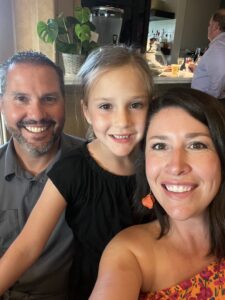
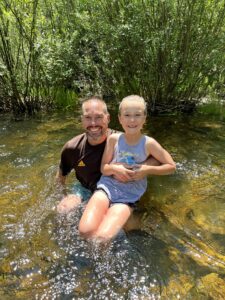 My nephew, Shannon Moore married my niece, Lindsay (Hadlock) Moore, on Valentine’s Day of 2014. This year marked their tenth anniversary, and every day has been a great blessing to Lindsay. Lindsay tells me that “Shannon is an amazing husband and dad!! God made him for this role. He is so patient, so kind, and so loving!!” I agree. Anyone who has seen these two together, will attest to that fact. Life has not always been easy for Shannon and Lindsay, but together, they have worked their way through it, supporting each other all the way. Their love is beautiful.
My nephew, Shannon Moore married my niece, Lindsay (Hadlock) Moore, on Valentine’s Day of 2014. This year marked their tenth anniversary, and every day has been a great blessing to Lindsay. Lindsay tells me that “Shannon is an amazing husband and dad!! God made him for this role. He is so patient, so kind, and so loving!!” I agree. Anyone who has seen these two together, will attest to that fact. Life has not always been easy for Shannon and Lindsay, but together, they have worked their way through it, supporting each other all the way. Their love is beautiful.
Lindsay can’t say enough good things about her husband. She tells me, “Shannon has been growing spiritually…and a lot over the last year. I’ve loved watching him grow and lead our family.” Having a husband that encourages the family to attend church is so important. The reality is that there are moments every day, when we need to draw closer to God, and learn to lean on Him. There is gladness, for which we can rejoice in Him; and sadness, in which we can draw our strength from Him…but only if we know Him. Shannon knows his God, and that has been a great source of strength and leading for him.
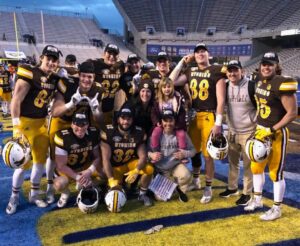
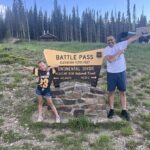 Shannon is such a fun-loving guy, and very adventurous. Among his favorite things is planning adventures for his family. This year, they went to Houston and Galveston. They also made a trip across South Dakota and Minnesota. They went camping in Casper, and in the Snowy Mountains, and Saratoga!! Lindsay tells me, “He loves to take care of us and show us something fun.” I can certainly see that in Shannon. They got on hikes to some of the most beautiful places, and their daughter, Mackenzie, their pride and joy, is so blessed to be introduced to these fun activities.
Shannon is such a fun-loving guy, and very adventurous. Among his favorite things is planning adventures for his family. This year, they went to Houston and Galveston. They also made a trip across South Dakota and Minnesota. They went camping in Casper, and in the Snowy Mountains, and Saratoga!! Lindsay tells me, “He loves to take care of us and show us something fun.” I can certainly see that in Shannon. They got on hikes to some of the most beautiful places, and their daughter, Mackenzie, their pride and joy, is so blessed to be introduced to these fun activities.
Shannon is the assistant coach for the Wyoming Cowboys football team. He is also their tight ends coach and helps with special teams too. Not only does Shannon’s family benefit from the kind of loving person Shannon is, but his players do too. Shannon and Lindsay are always doing special gatherings with the guys, many of whom 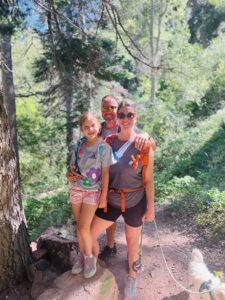
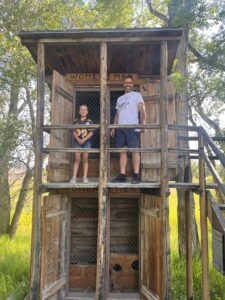 are far from home. Shannon and Lindsay really aren’t old enough, to be parental figures for the guys, but they definitely serve in the role of mentors, and the guys really appreciate that about them.
are far from home. Shannon and Lindsay really aren’t old enough, to be parental figures for the guys, but they definitely serve in the role of mentors, and the guys really appreciate that about them.
Shannon is well known for his servant’s heart. He serves his family, his friends and colleagues, and church with a glad and generous heart. That is one of Lindsay’s favorite things about him. Shannon has loved Lindsay since he first laid eyes on her, and his love for her grows deeper and deeper with each passing day. Shannon has a huge capacity for love, and his family is very blessed to have him. Today is Shannon’s birthday. Happy birthday Shannon!! Have a great day!! We love you!!
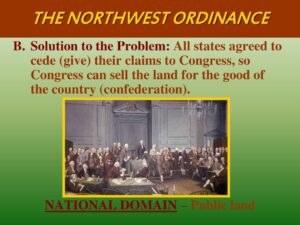 It never really occurred to me that the formation of new states in the United States would be the huge undertaking that it actually became. I just assumed that as the settlers moved into an area, they eventually got populated enough to decide to be a state. Of course, I realized that they would have to “petition” the national government for acceptance, but that wasn’t all there was to it at all. The United States had acquired the Northwest Territory (the Midwest today) in a number of steps. First, when it was relinquished by the British. Second, extinguishment of states’ claims west of the Appalachians. And finally, usurpation or purchase of lands from the Native Americans. Originally, the Hudson’s Bay Company acquired the area under a charter from Charles II in 1670. Then, in 1869, the Canadian government bought the land from the company. The boundaries we now have were set in 1912. In 1870, Canada acquired an area known as Rupert’s Land and the North-Western Territory from the Hudson’s Bay Company for £300,000 (Canadian $1.5 million) and a large land grant.
It never really occurred to me that the formation of new states in the United States would be the huge undertaking that it actually became. I just assumed that as the settlers moved into an area, they eventually got populated enough to decide to be a state. Of course, I realized that they would have to “petition” the national government for acceptance, but that wasn’t all there was to it at all. The United States had acquired the Northwest Territory (the Midwest today) in a number of steps. First, when it was relinquished by the British. Second, extinguishment of states’ claims west of the Appalachians. And finally, usurpation or purchase of lands from the Native Americans. Originally, the Hudson’s Bay Company acquired the area under a charter from Charles II in 1670. Then, in 1869, the Canadian government bought the land from the company. The boundaries we now have were set in 1912. In 1870, Canada acquired an area known as Rupert’s Land and the North-Western Territory from the Hudson’s Bay Company for £300,000 (Canadian $1.5 million) and a large land grant.
That left the United States with a kind of dilemma, since they wanted to make sure these new states were run in the way they had originally designed. So, on July 13, 1787, Congress enacts the Northwest Ordinance, to structure the settlement of the Northwest Territory. Since the formation of new states was a new venture for 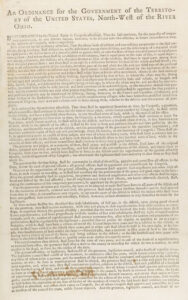 the young nation, they had to create a policy for the addition of these new states. Vitally important was the need to make sure their new nation thrived and survived. The members of Congress knew that if their new confederation were to survive intact, it had to resolve issue of the states’ competing claims to western territory.
the young nation, they had to create a policy for the addition of these new states. Vitally important was the need to make sure their new nation thrived and survived. The members of Congress knew that if their new confederation were to survive intact, it had to resolve issue of the states’ competing claims to western territory.
That said, in 1781, the state of Virginia began the process by ceding its extensive land claims to Congress. That bold move made other states more comfortable in doing the same. Thomas Jefferson first proposed a method of incorporating these western territories into the United States in 1784. His plan was to basically turn the territories into colonies of the existing states. Since each state was to have their own constitution, the ten new northwestern territories would select the constitution of an existing state that closely aligned with their own values. Once that process was complete, the new territory (colony) had to wait until its population reached 20,000 to join the confederation as a full member. That process made Congress nervous, because they feared that the new states…10 in the Northwest as well as Kentucky, Tennessee and Vermont…would quickly gain enough power to outvote the old ones, so Congress never passed Thomas Jefferson’s proposal.
It would be three more years before the Northwest Ordinance which proposed that “three to five new states be created from the Northwest Territory. Instead of adopting the legal constructs of an existing state, each territory would have an appointed governor and council. When the population reached 5,000, the residents could elect their own assembly, although the governor would retain absolute veto power. When 60,000 settlers 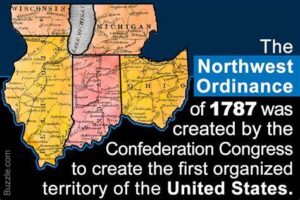 resided in a territory, they could draft a constitution and petition for full statehood. The ordinance provided for civil liberties and public education within the new territories, but did not allow slavery.”
resided in a territory, they could draft a constitution and petition for full statehood. The ordinance provided for civil liberties and public education within the new territories, but did not allow slavery.”
The last part angered the pro-slavery Southerners, but they were willing to go along with this because they hoped that the new states would be populated by white settlers from the South. They believed that although these Southerners would have no enslaved workers of their own, they would not join the growing abolition movement of the North. Of course, we all know how that played out.
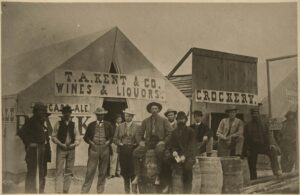 With the Westward migration in the United States, came the cowboys, and with them came the “Old West Saloons,” so that those cowboys wound have a place to wind down after a hard day’s work. We have all heard of the “Old West Cowboys” and while they were a picture of the west, it was the movies that brought them to life for most of us today. As the people moved west, many of the men came on their own at first. That brought the saloon keepers to see if they could make a buck on these men who were hungry for a little socialization. Saloons were common in almost all cities, and a few areas also had Mexican-style cantinas.
With the Westward migration in the United States, came the cowboys, and with them came the “Old West Saloons,” so that those cowboys wound have a place to wind down after a hard day’s work. We have all heard of the “Old West Cowboys” and while they were a picture of the west, it was the movies that brought them to life for most of us today. As the people moved west, many of the men came on their own at first. That brought the saloon keepers to see if they could make a buck on these men who were hungry for a little socialization. Saloons were common in almost all cities, and a few areas also had Mexican-style cantinas.
When we think of the “Old West Saloons,” we usually picture the same style. “A common wooden front with a wooden boardwalk. There were always a few hitching posts to tie a horse. Often a water source would be located close by for horses to drink. The front doors always consisted of two swinging doors that would brush up against a cowboy as he walked into the main bar area. The bar itself was very long to accommodate many standing customers. The floor area consisted of wooden tables and chairs.”
There were usually a group of men at the bar, and some at the tables playing a friendly game of poker…at least it was friendly until someone thought they were getting cheated. You put a few drinks in a guy, add to it the fact that he is losing the poker game, and it a recipe for a fight. That was how most of the violence in the towns got started…right there in the saloon and then, at times it moved out into the roadway.
We all think of the first saloons in the typical way of the movies, but that really wasn’t the case. “The first 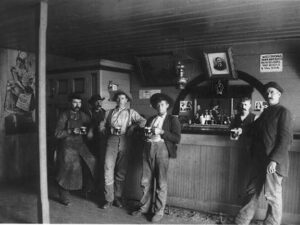 saloons were mostly tents or square wooden structures with tent material thrown over the top. The material was enough to keep the rain off the heads of their customers. The floors were not made of wood. Tent saloons never had floors of any type. If it rained, the floors were muddy, and if it was dry, they were dusty. The only thing the early saloon offered was whiskey and a place to sit and rest.”
saloons were mostly tents or square wooden structures with tent material thrown over the top. The material was enough to keep the rain off the heads of their customers. The floors were not made of wood. Tent saloons never had floors of any type. If it rained, the floors were muddy, and if it was dry, they were dusty. The only thing the early saloon offered was whiskey and a place to sit and rest.”
The first whiskey ever served in a saloon was not the fine whiskey that we all think of. In fact, New Yorkers or those from Chicago would most likely cringe at the taste of the whiskey of the Old West. Whiskey in those days was “raw and made right in the camp or town. The simple ingredients included raw alcohol, sugar burnt, and a little pouch chewing tobacco. Whiskey with terrible names like ‘Coffin Varnish,’ ‘Tarantula Juice,’ ‘Red Eye,’ and others was common among the early saloons.” Later, when the trading with the Indians, the word “Firewater” was used to describe Whiskey. It got that name because they demonstrated its potency by pouring it over the fire. With a high enough proof, the Whiskey acted like gasoline on the fire. The name stuck, and Firewater it was!! Now, the Whisky of those days was not for the “lightweight” and was not to be sipped. The people of those days expected the patrons to drink it quickly. If they didn’t, they might find themselves “drinking a 5th of Whiskey at gunpoint.” Sipping was considered a weakness, and it was not tolerated!
Everyone thinks people of that era drank a lot of beer, but that was not common. Since pasteurization was not invented yet, the bear was warm, and if you didn’t drink it fast, it would get warmer and go flat. Whiskey kept its taste and potency no matter the temperature. “It was not until the 1880s that Adolphus Busch invented artificial refrigeration and pasteurization methods to the brewing process soon after Budweiser launched as a 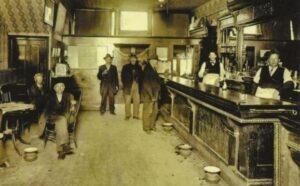 US national brand.”
US national brand.”
The first saloon was opened in the late 1820s in Bent’s Fort, Colorado. “A few little towns already had cantinas, but they did not compare to saloons that would soon spread like wildfire throughout the west. Striking gold was a big indicator that a saloon would pop up in that town. In 1848, Santa Barbara, California, only had one cantina. Yet after the discovery of gold, the town soon grew to 30 saloons. Towns like Livingston, Montana, with its 3,000 residents, had no less than 33 saloons. Back in those days, it was easy to open a business. Innovation and growth were on the incline. Saloons were profitable and with a large customer base.”

